After the Texas Multigun Championship last week, I was really looking forward to my next 3-gun match. I learned a ton from the Team FNH USA guys, and I really wanted to put that knowledge to work. Unfortunately, thanks to the NRA Annual meeting coming up and then needing to cover some of the pro series competitions, the next opportunity I would have to shoot would be over a month away at the Hornady Zombies in the Heartland shoot. So when one of our readers clued me into a local match that was going on out near College Station this past weekend, I immediately signed up . . .
I had never heard of the Lone Star Shooting Association before, but apparently they’re a gun rights group affiliated with the Firearms Policy Coalition that also exports its love of guns to the Italians and is fighting for gun rights in Europe. A good cause, and also how they get away with calling it the World 3-gun: one actual Italian showed up to shoot. The range itself was impressive, nestled in the countryside northwest of Houston with plenty of long range opportunities and acres of land. And they planned to use every inch of it.
By the time the shootes’ meeting rolled around there were only 30 shooters registered, 18 of which were running Tac Optics with me, and all of whom were divided into three squads. Given that this match was the weekend after the Texas Multigun (with most shooters still recovering) and that it was a fundraiser (so no prize table), the sparse turnout wasn’t a surprise. In fact, the attendance was so thin that if I had swapped into open division right then, I would have walked away at the end of the day with a guaranteed 3rd place finish. But I didn’t, I wanted to compete for my position. And that would come back to bite me in the ass later.
Before we get into the details of the competition, I want to talk about another possible strategic mistake on my part. Normally, the Tac Optics division doesn’t get any optics on their shotgun. You use the iron sights on the gun, and that’s it. But with these specific rules, shooters were allowed one optical or electronic sight on their shotgun. As soon as I saw that, I immediately grabbed the Konus red dot that’s been sitting on my desk waiting to be reviewed for months now and slapped it on my FNH SLP Mk. I.
I figured it would at least be fun to run it, probably giving me some good data for the eventual review. But since I wouldn’t have any time to zero it at the range before the shoot, I did the best I could with a laser sight in my apartment to get it roughly aligned with the iron sights. Still, by the time the day of the competition rolled around I wasn’t completely sure my sights were aligned.
Also, I had picked up some pink rail covers off the prize table from the Texas Multigun match the previous weekend, and subsequently lost a bet. So my shotgun’s rails were sporting some pretty in pink accessories. On the positive side: I always knew exactly which SLP on the table was mine.
I was in the first squad, so we shot the stages in order. Number one consisted of some shotgun targets, and then some rifle targets shot through a couple ports. The tricky part was that the shotgun started completely unloaded. Loading a shotgun and keeping it fed in a timely manner is the entire challenge behind the gun, so seeing a stage that challenged shooters this way was a pretty cool idea. Being a local match, most people were running their shotgun loads from a dump pouch or shotgun shell pouch, and timing out before they reached the end of the stage (60 second par time). My “load two” holders on my belt let me finish in under 30 seconds.
Note to self: remember to rack the action on the shotgun if there’s nothing in the chamber.
At the end of stage 1, I had the top score in the squad, including a couple open division shooters who were grouped with us. So at the time, I was quietly optimistic about my chances for getting the top slot in the rankings. The next couple stages would only re-enforce that hope.
Stage 2 started with a Texas star, a spinning steel target with falling plates that bedeviled me back in Pennsylvania. The challenge is that, as the plates fall, the weight of the thing becomes unbalanced and it starts to spin. Then, as it settles down, it swings from side to side making shooting it even more difficult. Dean DeTurk runs the matches back in Topton, Pennsylvania and my old teammates and I swore that he set those things extra stiff just to screw with us. We eventually resorted to using high brass turkey loads and full chokes when shooting Dean’s Texas stars just to be sure we could knock them down.
This Texas star, though, wasn’t set quite so heavy and my lighter shotgun loads and cylinder choke were doing just fine. Especially at that distance, I don’t think a tighter choke would have made much of a difference. I was doing fine until the second to last steel plate refused to fall off. That forced me to send an extra round its way and threw off my count. Then I missed one of the smaller steel plates and needed to load another round ASAP, further slowing me down. Moral of the story: never load one round when you can load two just as quickly.
As I bolted for the next obstacle (a set of paper targets behind a barricade) I made doubly sure not to break the 180. Two people had already been DQ’d for that on this stage and I can understand why. The targets were set up such that you actually needed to run a little bit up range in order to engage them all. Most people were simply running straight across and then pivoting their gun past the imaginary 180 line. In my book, it was a poor stage design. Then again, I didn’t have any issues with it and ran it clean. I probably shouldn’t have reloaded my handgun when I ran dry (I already had one round in the “A” zone) but that was relatively a minor error.
Stage 3 had a bunch of paper and steel targets you needed to engage from behind a barricade; a pretty simple design and very straightforward. The only thing of note here was that I should have slowed down a bit with the handgun on the steel targets. Still, I was encouraged by how quickly I hit the first one and figured I could speed up with no issues. Slow and smooth, Nick, slow and smooth. Also, I probably should have leaned out a little more instead of going over the barrel with the rifle. That probably cost me a couple seconds.
Despite those issues, I came away with the top score on all of the first three stages. And I mean the TOP score. I had run it harder and faster than anyone else at the time, even with my technique problems. Unfortunately, it would be the last time I was on top for the rest of the match.
The next stage involved some shotgun shooting at clay pigeons on the ground, some medium range rifle shots and finally small handgun targets. It seemed like everyone was timing out this stage, so I tried to make a mental note to slow down with my handgun shooting on the smaller targets.
Things started out well enough. I shot the shotgun targets pretty quickly and properly dumped the shotgun before settling into my rifle. The targets were at about 200, 300 and 400 yards and I nailed each one in good time. Even my handgun shooting seemed to be better, going just about one-for-one on the steel targets in the first array and getting the second array pretty fast, too.
Something happens, mentally speaking, when you change magazines. I’m not sure why exactly, but it’s like walking into a new room. Your mind kind of resets itself. This is great for when you’ve been missing targets, as it gives you a second to calm down and re-focus. But when you’ve been doing well, it can screw everything up. Thankfully there were only three targets left after my reload, and I hit them in pretty short order.
Stage 5 started with a couple slug targets, which I was sure I was going to miss. The red dot I was using wasn’t working out very well, and I was convinced that I’d miss at least one of those longer range shots. And when I asked about loading additional slugs, the answer was that it isn’t allowed. Following the slugs were a bunch of smaller shotgun steel targets, followed by some “headshots only” rifle targets and ending with pepper poppers.
As expected, I missed the first shotgun slug target. But then I hit the second one and mopped up the smaller steel targets. The headshots also went well, as I decided to pop two rounds in each. The decision appeared to have paid off, too – there was one target where I pulled a shot and ended up with only one round on paper.
As for the pepper poppers, though, the stage designer must have had touch evil in him. Behind a couple of the steel targets was a “no shoot” target that, if hit, was a big penalty. That meant you had to hit the steel target and NOT miss, putting a lot of pressure on the shooter. Many of the guys in the squad slowed down noticeably when shooting that target, and for good reason.
Stage 6 was an absolute blast. Its nickname was “jungle run” and started by having the shooter breaching a door with their shotgun, then running down a path to shoot some clay pigeons before ending up taking out some steel targets with a handgun. I’d asked if I could shoot the handgun targets with the shotgun, too, but the ROs were having none of that.
As expected, this stage was tons of fun. The red dot on my shotgun really helped me sight in on the targets quickly, and the “load two” shotgun reloads kept the gun running. The only hiccup was when I finally had to transition to my handgun. I missed a couple of shots at first, but finally settled down, took my time and hit the rest of the targets without a problem.
But this was when I got my first indication that I might be slipping on the leaderboard. The ROs said that my time was the second or third fastest they’d seen that day, and I didn’t like the sound of that. I figured I could make it up on the long range stages, and oh boy was I wrong.
Stage 7 required the shooter to hit three sets of three steel plates at around 150 – 200 yards from three different barrels. The barrels were set in such a way that you needed to be actually IN the barrels to hit the target, a fact that would soon have some major implications for my score.
At these competitions, I usually wear Surefire hearing protection plugs. They do a great job of protecting my hearing while also allowing me to hear what’s going on. And in the summer heat of south Texas, wearing earmuff style hearing protection all day long isn’t really an option. Unfortunately, I over estimated how well the Surefire ear pro works.
I was lined up on the first target. I remember hearing the buzzer go off, clicking off the safety on the rifle and hearing it go. And then all I remember is a ton of pressure in my ears and not being able to hear a damned thing.
Muzzle brakes are great for reducing recoil, but in the confines of a barrel it creates a painful pressure the likes of which I’ve never experienced. I could only compare it to being hit with a flashbang, but without the flash. It was not only painful but disorienting, too. Not good in the middle of a 3-gun stage.
Each round I fired in the barrels only increased the pressure and the pain, and the lack of ventilation meant that the exhaust from the burning gunpowder was trapped in the barrel, choking me. It was one of the most uncomfortable and unnecessarily painful shooting positions I had ever been in, and I just wanted it to stop.
As the pain increased, my shooting took a nosedive. The targets weren’t really any further in the third barrel than the first, but I could no longer hit them. I spent a solid 20 seconds trying to hit the last two plates, unable to hear the RO who was trying to be helpful and call my shots for me, all while my brain was screaming at me to stop. Those 20 seconds completely knocked me out of the running. So I lost the competition because my hearing protection wasn’t good enough, and that pissed me off.
This is where I regretted my decision not to run in open division. In open division, I could have slapped my silencer on the gun and avoided that whole mess. But because I wanted to be competitive, I was pissed off at my score and physically hurting. Lesson learned: come Monday morning I would be putting in a call to Sport Ears (one of our sponsors) to see about getting a set of hearing protection from them.
The next stage, stage 8, was another fairly straightforward one. Shoot some longer range steel through designated ports, then take out some handgun targets. But because I was still so peeved about my performance on the previous stage, I fumbled when I went to set my rifle on the barricade. I mumbled a quick “frak” under my breath and kept moving, eventually running the stage in a respectable time.
Stage 9 seemed like the designer had run out of ideas and just wanted to use the long range steel. Three silhouettes from behind one barricade, then run to a second one for three more. I rocked it, having calmed down somewhat. But this stage made me realize that I need to get a set of cleats. As Erik Lund had pointed out, big guys like us take a little effort to get moving and then take a lot more effort to get stopped. So while my Danner boots were comfortable, it was time to trade up to something with some more bite and turn this hobby into a sport.
Stage 10 was the last one, and the one I was looking forward to the most. It featured long range steel, with targets between 100 and 500 yards. I’d been dreading an identical stage the weekend before, but after realizing exactly how awesomely my SCAR 16S and Winchester 55 grain ammo run at long range, I no longer feared it. The results: out of 10 targets I hit every single one in a matter of seconds and only missed four shots.
After all the shooters were finished, some of them (including the ROs) asked if they could try out my SCAR. If it had been my own ammo on the line I might not have been so generous, but since Winchester had generously donated the rounds for practice and competition and I had budgeted for more than I needed, I loaded up a couple magazines and let them have some fun.
After shooting it, a couple gun store owners who had been on our squad turned to each other and said “that’s what we need to get into the shop next.” I figured I had done my FNH USA evangelizing for the day and done it well. Then again, with that good Winchester ammo, ringing some long range steel with boring repetitiveness kind of sells the gun all by itself.
This is where things got a little screwy, and I have had to update the article based on new information. So bear with me here.
As I sat down for the award ceremony,I knew that I probably screwed up my chances of taking the top spot. The barrels on stage 7 had taken their toll on both my score and my ears, and I didn’t think there was a way to recover from that. Despite my sucky score on that stage. I figured that there was still a chance I would be in the top five of my division. The LSSA had some nifty award trophies made up that look like standard IPSC targets, and I was really looking forward to plopping one on my bookshelf and nailing it with my airsoft guns.
When they came to my division for the results, I watched as each of the top five competitors’ names were called out… and none were mine. It was a major disappointment.
As I started the three hour long drive back to San Antonio, I wasn’t happy. Sure, I had made some mistakes, and there were definitely things I could have done better. But the biggest detractor to my performance was my gear. I hadn’t packed any earmuff-style hearing protection, and not only did I end up with a crappy score, but I probably had some hearing damage to go along with it. A lesson learned the hard way, and one I’d remember as I packed for the Hornady Zombie 3-gun at the end of next month.
The following day, the full list of scores for the competition were posted on the website… and my name wasn’t on the list. There were a large number of people disqualified from the competition, but I wasn’t one of them. The scorekeepers had screwed up, and I was royally pissed off. This was the second competition in a row where the scorekeepers had screwed me over, and made me swear to always snap a picture of the score sheets before I handed them in from now on. As soon as I informed the match director of the issue, he immediately started looking into it. And to his credit, by the following evening he had it completely sorted out.
Final score: 2nd place in my division (out of 18), 4th overall (out of 30+).
That I’m pretty happy about. I could have done better still, and I will have an opportunity to try again, but for now I’ll be satisfied with that score. For now.

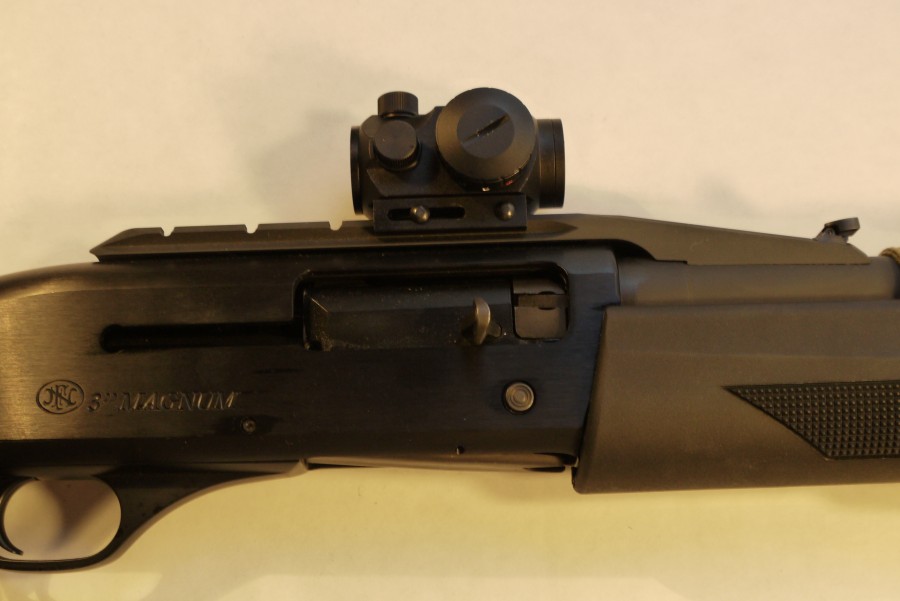
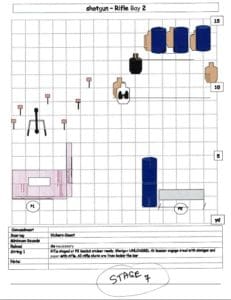
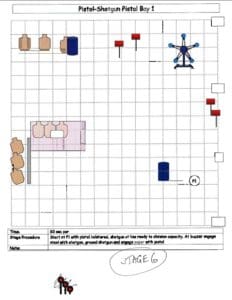
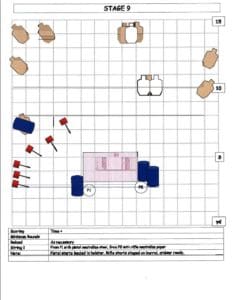
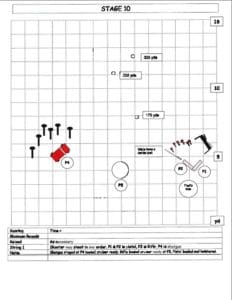
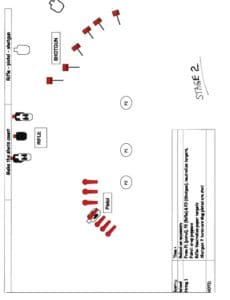
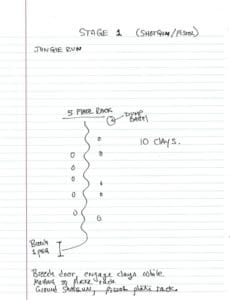
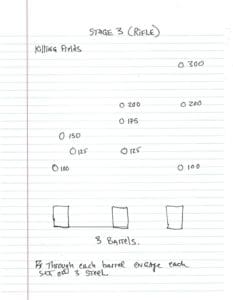
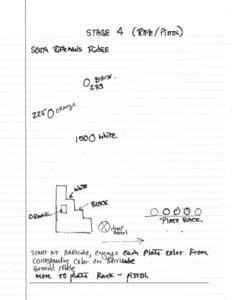
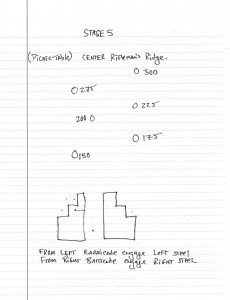

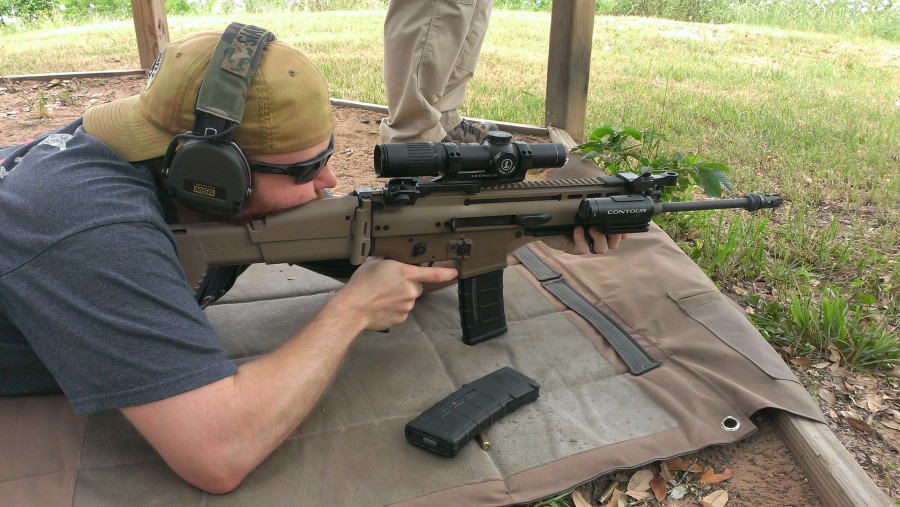



Impressive shooting…nice job!!
If ammo ever becomes plentiful and affordable again, I’d like to get involved with this. Nice shooting there!
I’m really enjoying this series, Nick. I have tons of respect for how you own both your successes and your mistakes.
Because I host newbie and guest shooters so frequently, I always have multiple different options for eye and ear protection in my range bag. That has absolutely saved the day for me a couple of times — there was one indoor range where I had to put disposable foam earplugs from my “guest supply” under my earmuffs just to get out of there without hearing damage.
It’s also a good idea to have a range of eye pro available. My primary eye pro has interchangeable lenses, but I keep a couple pairs of factory-fresh fixed-lens goggles in the bag as well, one tinted and one clear. Nobody gets to borrow my backups, either.
“I’m really enjoying this series, Nick. I have tons of respect for how you own both your successes and your mistakes.”
QFT.
I’m working on reorganizing my finances re: future plans so I can do this, sooner rather than later. It’s always been on my list, but reading (and watching these) has made me decide to move it way up near the top.
Competitive shooting was one of the reasons I started doing Crossfit, and continues to be a motivator.
Related: I’ll soon be sending my USP40 off to Bill Springfield for a surprisingly affordable comprehensive upgrade job. I’ll also be sending along the trigger group from my AR to be reworked for a 3lb single-stage pull plus modifications to reliably fire Russian 5.45×39 primers… All for well under $250.
Then I’ll just need to get set up to reload unfired Russian 5.45 ammo with copper/lead projectiles and I’ll be ready to get started…
What load-2 shell caddies did you use?
what model of load 2 shell caddies did you use?
Comments are closed.